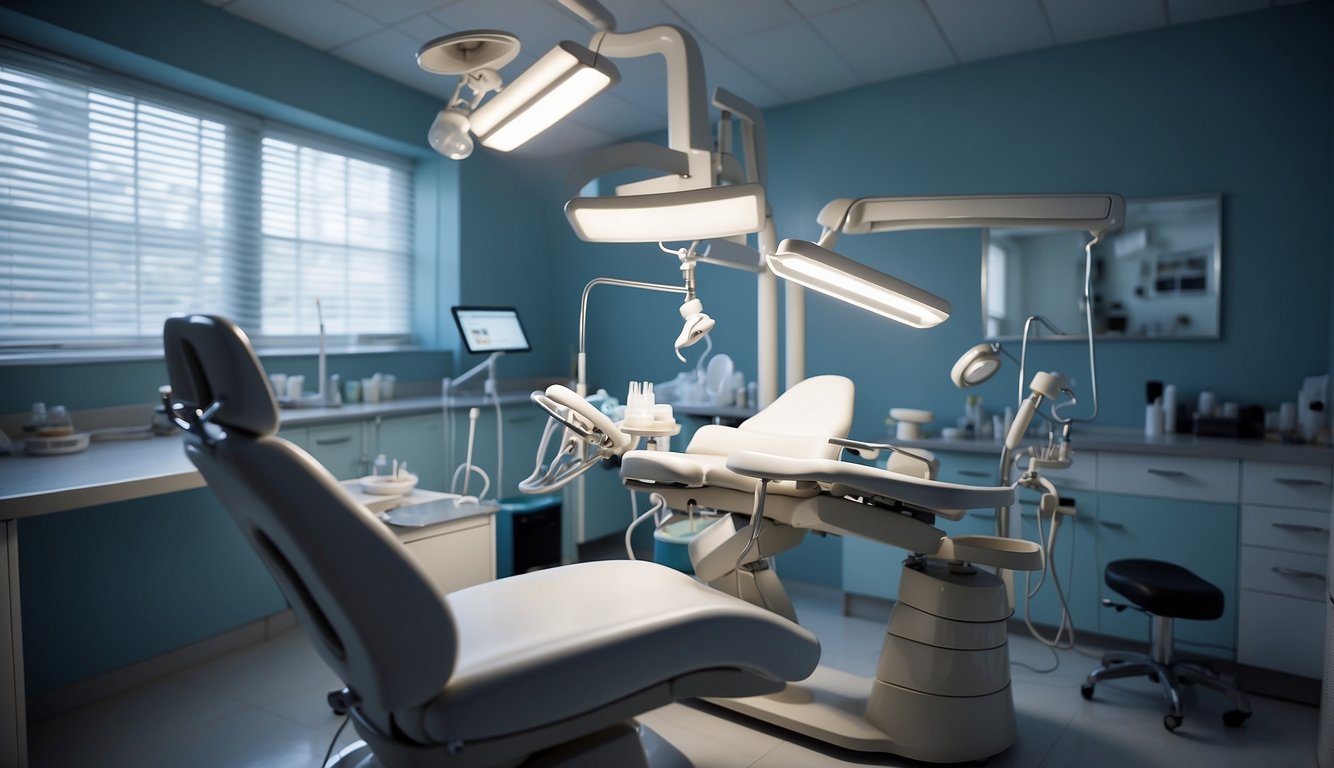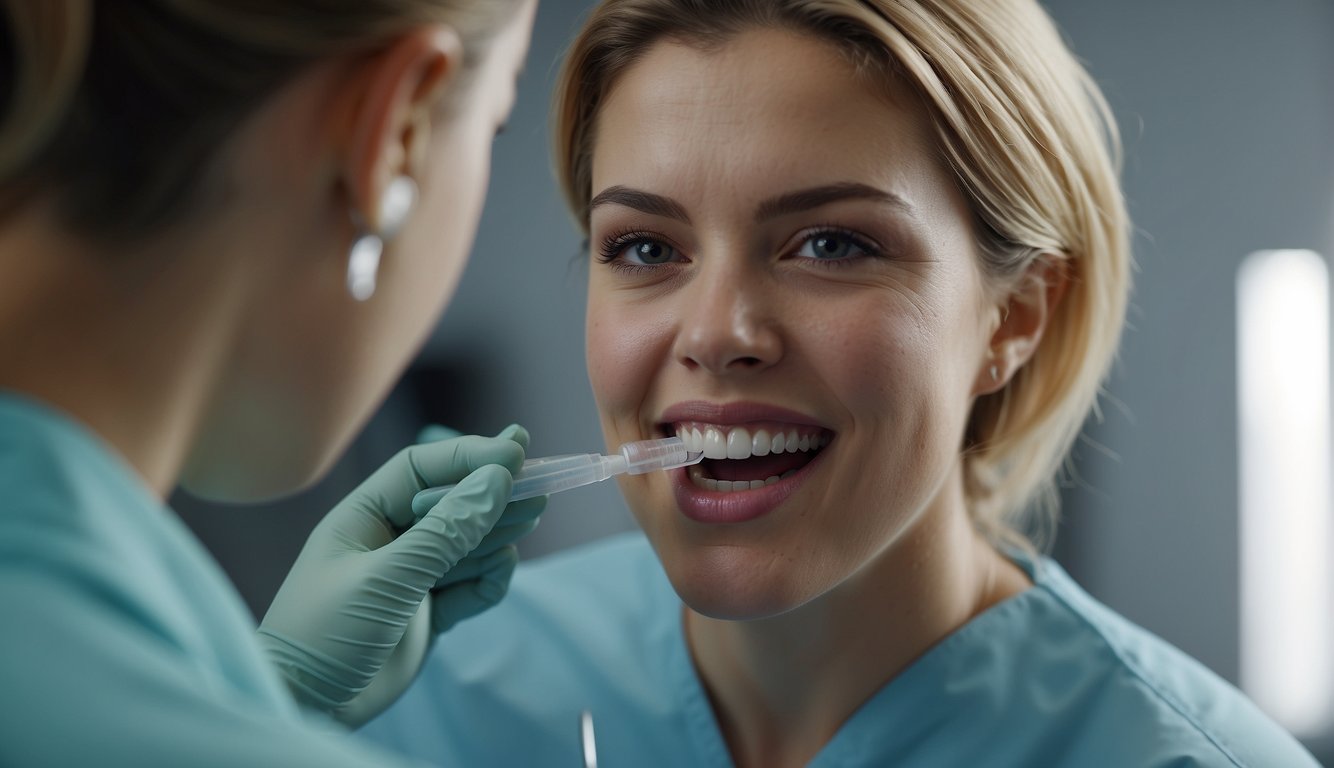How Often Do I Need a Dental Cleaning? Your Guide to Optimal Oral Health Maintenance
Dental cleanings are a critical component of maintaining oral health and preventing dental issues. Regular cleanings by a dental professional help to remove plaque and tartar that daily brushing and flossing might miss. These substances can lead to decay and gum disease if not properly managed. Equally important is the role of dental cleanings in the early detection of potential oral health problems, allowing for timely treatment.

The frequency with which you should schedule dental cleanings can vary based on individual needs and the condition of your oral health. Generally, dentists recommend that most people have a dental cleaning every six months. However, those with specific dental issues or a high risk of dental diseases may need cleanings more frequently. Your dentist will evaluate your oral health and advise you on the best cleaning schedule for your particular situation.
Maintaining proper oral health at home is also crucial. Daily brushing and flossing, along with a healthy diet and avoiding tobacco products, contribute to a lower risk of needing extensive dental treatments. While professional cleanings are necessary, they work best in conjunction with consistent at-home oral care practices.
Key Takeaways
- Regular dental cleanings are essential for preventing dental problems and gum disease.
- Dentists typically advise semi-annual cleanings, but some individuals may need more frequent visits.
- Daily personal oral care is vital in conjunction with professional dental cleanings for optimal dental health.
Understanding Dental Cleaning

In dental care, regular cleanings are crucial for maintaining oral health by removing plaque and preventing various dental issues.
Purpose and Benefits of Teeth Cleaning
We undergo dental cleanings to remove plaque and tartar build-up that regular brushing and flossing can’t tackle. These cleanings play a vital role in preventing gum disease, tooth decay, and periodontal disease.
- Plaque: A sticky film of food debris, bacteria, and saliva that can harden into tartar if not removed.
- Tartar: Hardened plaque that can only be removed by professional dental tools.
- Gum Disease: An infection of the tissues that hold teeth in place, often caused by plaque and tartar buildup.
- Tooth Decay: The destruction of tooth enamel caused by acids produced by bacteria in plaque.
By engaging in regular dental cleanings, we can enjoy the benefits of these measures which include:
- Reduced risk of dental problems
- Early detection of potential oral health issues
- Enhanced overall health, as oral health is linked to systemic health
Different Types of Dental Cleanings
There are several types of dental cleanings that we might encounter, each tailored to our specific oral hygiene needs.
- Prophylaxis Cleaning: This is a preventative cleaning for individuals without significant gum disease. It typically involves:
- Scaling: Removing plaque and tartar from the tooth surface.
- Polishing: Smoothing out the tooth to discourage bacterial attachment.
- Fluoride Treatment: Application of fluoride to strengthen tooth enamel.
- Scaling and Root Planing: A deeper cleaning for those with signs of periodontal disease, involving:
- Deep Scaling: Removing plaque and tartar from below the gum line.
- Root Planing: Smoothing the tooth root to help the gums reattach to the tooth.
Through these targeted cleanings, we ensure effective maintenance of our oral hygiene, which is a cornerstone of our overall health.
How Dental Cleanings Are Performed

In our dental practices, a professional teeth cleaning involves several integral steps performed by a dental hygienist to maintain oral health. We meticulously clean your teeth to remove plaque and tartar, prevent cavities, and ensure overall gum health.
The Teeth Cleaning Procedure
During a standard teeth cleaning, we first examine your mouth. Dental examinations often involve taking x-rays or radiographs to detect any underlying issues that can’t be seen during a visual examination. Using specialized tools, we begin by removing plaque and tartar build-up around your gum line and in between your teeth—places where your toothbrush can’t always reach. This thorough cleaning process is aimed at preventing tooth decay and gum disease.
Scaling and Polishing
Teeth scaling and polishing are vital components of a dental cleaning. For scaling, we may use a manual scaler or an ultrasonic scaler, which uses vibrations to remove larger pieces of tartar and plaque. Once the scaling process is complete, we polish your teeth. Polishing is done using a high-powered brush and a gritty toothpaste-like substance, which smooths and cleans the tooth surface, making it more difficult for plaque to accumulate before your next visit.
Deep Teeth Cleaning
In cases where there is significant plaque and tartar build-up, or signs of gum disease, we may recommend a deep teeth cleaning. This process, also known as scaling and root planing, involves cleaning below the gum line to remove plaque, tartar, and bacterial toxins. For deep cleaning, a local anesthetic may be applied to ensure your comfort during the process. This is more intensive than regular cleaning and is crucial for restoring and maintaining your gum health.
Frequency and Scheduling
Optimal oral health hinges on adherence to a schedule of dental cleanings that’s tailored to individual needs. Both regular maintenance and response to specific oral health concerns dictate this timing.
Regular Cleaning Schedule
American Dental Association (ADA) guidelines inform our practice of scheduling regular teeth cleanings. As dental practitioners, we typically recommend that patients have a dental cleaning every six months. This biannual schedule aids in the prevention of common issues such as gingivitis and periodontitis.
Patients with special conditions, like diabetes or osteoporosis, may warrant more frequent visits, since these conditions can influence oral health. For those with excellent oral health, dentists might suggest a longer interval between cleanings. It’s critical that these decisions are made based on thorough assessments and consistent monitoring of oral health status.
- Dental insurance plans often cover biannual cleanings, making this frequency not just beneficial for health, but also cost-effective.
- For patients without dental insurance, discussing a payment plan with the dental office can ensure cleanings remain a priority.
Situational Cleaning Frequency
When changes in oral health occur, we adjust cleaning frequency to meet the new demands. Increased risk of periodontitis or the presence of gingivitis necessitates a more aggressive approach, potentially requiring cleanings every three to four months.
Our recommendations rest on current research and a commitment to preserving oral health with effective interventions. While fluoride treatments during regular cleanings serve as a robust preventive measure, they’re also part of our tactical response when faced with heightened risk scenarios.
- Patients experiencing acute oral health issues may receive a tailored schedule that can also fluctuate based on their response to treatment and changes in their condition.
- Close collaboration with patients ensures we establish a schedule that maximizes oral health outcomes while considering personal circumstances.
Maintaining Oral Health at Home
Proper oral care at home is paramount to prevent dental issues such as cavities and gum disease. We can uphold dental health through consistent daily practices and lifestyle choices.
Daily Oral Hygiene Practices
Brushing our teeth twice a day for two minutes with a toothbrush containing fluoride toothpaste is critical in removing dental plaque and preventing tooth decay. It’s important to focus on technique; we should use gentle, circular motions, ensuring we reach all surfaces of each tooth.
- Choosing the Right Toothbrush: Soft bristles are generally recommended to protect tooth enamel and gums from damage. Toothbrushes should be replaced every three to four months, or sooner if the bristles are frayed.
- Flossing Daily: At least once a day, flossing removes food particles and plaque from between teeth and along the gum line where a toothbrush can’t reach. This helps to prevent bleeding gums, receding gums, and gum disease.
Using antiseptic mouthwash can assist in reducing bacteria that cause bad breath and helps in maintaining a healthy oral environment.
Lifestyle and Preventative Care
Our lifestyle habits have a significant impact on oral health. Incorporating preventative care into our daily routine can greatly reduce the risk of dental problems.
- Balanced Diet: Limiting sugary and acidic foods is essential as these contribute to enamel erosion and cavity formation. Instead, we should opt for a diet rich in fruits, vegetables, and water to promote saliva production, which naturally cleanses the mouth.
- Staying Hydrated: Drinking plenty of water helps maintain saliva flow and prevent dry mouth, which can lead to bad breath and other oral health issues.
- Regular Dental Visits: While home care is crucial, visiting a dentist every six months for professional cleanings and check-ups plays an integral role in preventative care.
- Avoid Tobacco: Staying away from tobacco products helps to safeguard our oral health by reducing the risk of gum disease, bad breath, and oral cancer.
By sticking to these habits and making educated lifestyle choices, we can ensure that our oral hygiene supports our overall health and minimizes dental interventions.
If you’re looking to book a dental cleaning in the Culver City area, please feel free to book your appointment online or call us at (310) 838-7780 today!
Frequently Asked Questions
Dental cleanings are a critical part of maintaining oral health. We will cover some of the most common queries related to the frequency of dental cleanings.
How long is it safe to go without a dental cleaning?
It’s generally recommended not to go longer than six months without a dental cleaning. However, individual needs may vary, and our dentists might suggest a different frequency based on your oral health.
Should I get my teeth cleaned more frequently if I have periodontal disease?
Yes, if you have periodontal disease, we often recommend more frequent cleanings, potentially every 3-4 months, to manage the condition and prevent further progression.
What are the recommendations for teeth cleaning frequency with braces?
With braces, we may advise dental cleanings every 4-6 months to ensure that any plaque build-up around brackets and wires is thoroughly removed.
How often is a deep cleaning necessary for dental health?
A deep cleaning, or scaling and root planing, is typically reserved for individuals with periodontal disease and is not performed on a routine basis. The frequency is determined by the severity of the periodontal disease and the recommendation of our dental professionals.
Is it recommended to have a dental cleaning every six months?
For most people, having a dental cleaning every six months is effective to maintain dental health, but we may alter this schedule to suit your specific oral hygiene needs.
Are there risks associated with skipping routine dental cleanings?
Skipping routine dental cleanings can lead to a buildup of plaque and tartar, increasing the risk of cavities, gum disease, and other dental problems, so it’s important to adhere to the recommended cleaning schedule.
